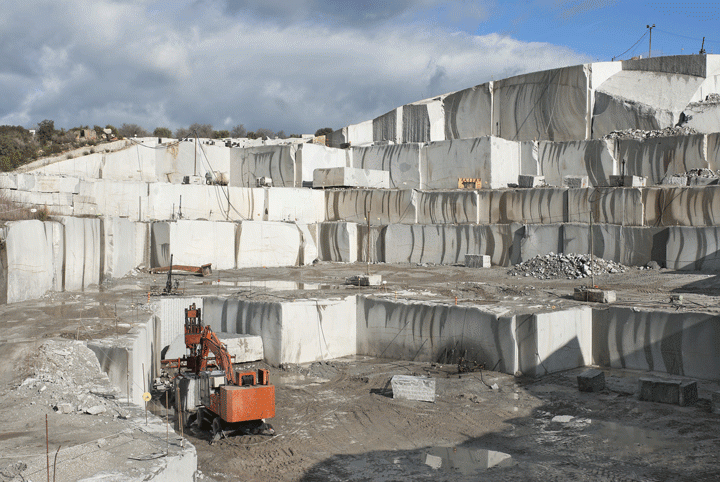Travelling Through Granite Quarries in South Africa: A Visual Odyssey
Travelling Through Granite Quarries in South Africa: A Visual Odyssey
Blog Article
Unearthing the Rich History and Sustainable Practices of Granite Quarrying
As we base on the precipice of revealing the detailed tapestry of granite quarrying, a trip with time reveals not simply the physical act of removing stone however additionally the social and historic relevance woven into the very fabric of this practice. From the ancient beginnings that laid the structure for contemporary quarrying techniques to the sustainable practices that are shaping the future of this market, each chisel mark on granite surfaces informs a story waiting to be unearthed (granite quarries in south africa). The legacy of granite quarrying stretches much past mere extraction; it is a testament to human resourcefulness, durability, and the enduring attraction of this magnificent rock
Ancient Beginnings of Granite Quarrying
Dating back to old human beings, the practice of quarrying granite has actually been an integral component of human background and architectural advancement. The earliest proof of granite quarrying days back to ancient Egypt, where enormous pyramids and intricate sculptures were crafted from this durable stone. The Egyptians used primitive tools to remove granite blocks from quarries, showcasing the importance of this material in their monumental constructions.
Progressing in background, the Greeks also made significant contributions to the quarrying of granite. The Greeks made use of granite in numerous building wonders, such as holy places and sculptures, demonstrating their skill in shaping and carving this hardy stone. The Romans further refined the techniques of quarrying granite, employing advanced devices like knives and hammers to remove and form granite for their famous frameworks.
With the centuries, the technique of quarrying granite has actually advanced, with modern technologies boosting performance while keeping the classic charm of this natural stone - granite quarries in south africa. From old civilizations to contemporary contractors, the tradition of granite quarrying remains to shape our world
Evolution of Quarrying Techniques
The development of quarrying methods has been marked by a continual development in the direction of greater performance and accuracy in removing granite. Early quarrying techniques involved hand-operated labor with basic devices such as blades, hammers, and wedges to extract granite blocks from the earth.
Improvements in computer-controlled equipment and 3D modeling have actually maximized quarrying operations, leading to very little environmental impact and improved sustainability practices. As the demand for granite proceeds to climb, the advancement of quarrying strategies continues to be indispensable to conference sector requires effectively and sustainably.
Social Value of Granite
Granite holds an extensive social value throughout numerous human beings due to its enduring presence in building masterpieces and revered monoliths. The cultural significance of granite expands beyond its physical features; it symbolizes resilience, security, and eternity, making it a sign of enduring legacies and practices.

Sustainable Practices in Quarrying
In the middle of the abundant history of granite quarrying and its cultural significance lies a growing emphasis on sustainable practices within the sector. As ecological understanding and concerns concerning source exhaustion have actually increased worldwide, the quarrying sector has actually progressively embraced lasting methods to decrease its influence on the environment and bordering communities.

In addition, recovery and rehab of quarry sites post-extraction are important to lasting methods. By bring back quarried areas to a natural or helpful state, such as developing wild animals environments or leisure areas, quarriers can offset the environmental footprint of their procedures and add positively to the local community.
Legacy of Granite Quarrying
With a historic background soaked in craftsmanship and industrial progress, what sustaining influence has granite quarrying left on the landscape of modern-day culture? The heritage of granite quarrying transcends mere removal techniques; it has actually formed architectural marvels, metropolitan landscapes, and cultural heritage worldwide. The resilient nature of granite has made it a preferred selection for monuments, structures, and framework, standing as a testimony to the ability and virtuosity of quarry employees across generations.
Moreover, the financial footprint of granite quarrying can not be overlooked. The sector remains to provide job opportunity and drive neighborhood economic situations in regions where granite removal prevails. It has granite quarries in south africa likewise spurred technical improvements in quarrying techniques and tools, causing much more reliable and sustainable techniques.
In terms of sustainability, the tradition of granite quarrying consists of efforts to websites alleviate ecological impacts with recovery projects and accountable source management. By balancing financial interests with environmental stewardship, the sector strives to make sure that future generations can proceed to gain from this enduring all-natural resource.
Final Thought

Report this page